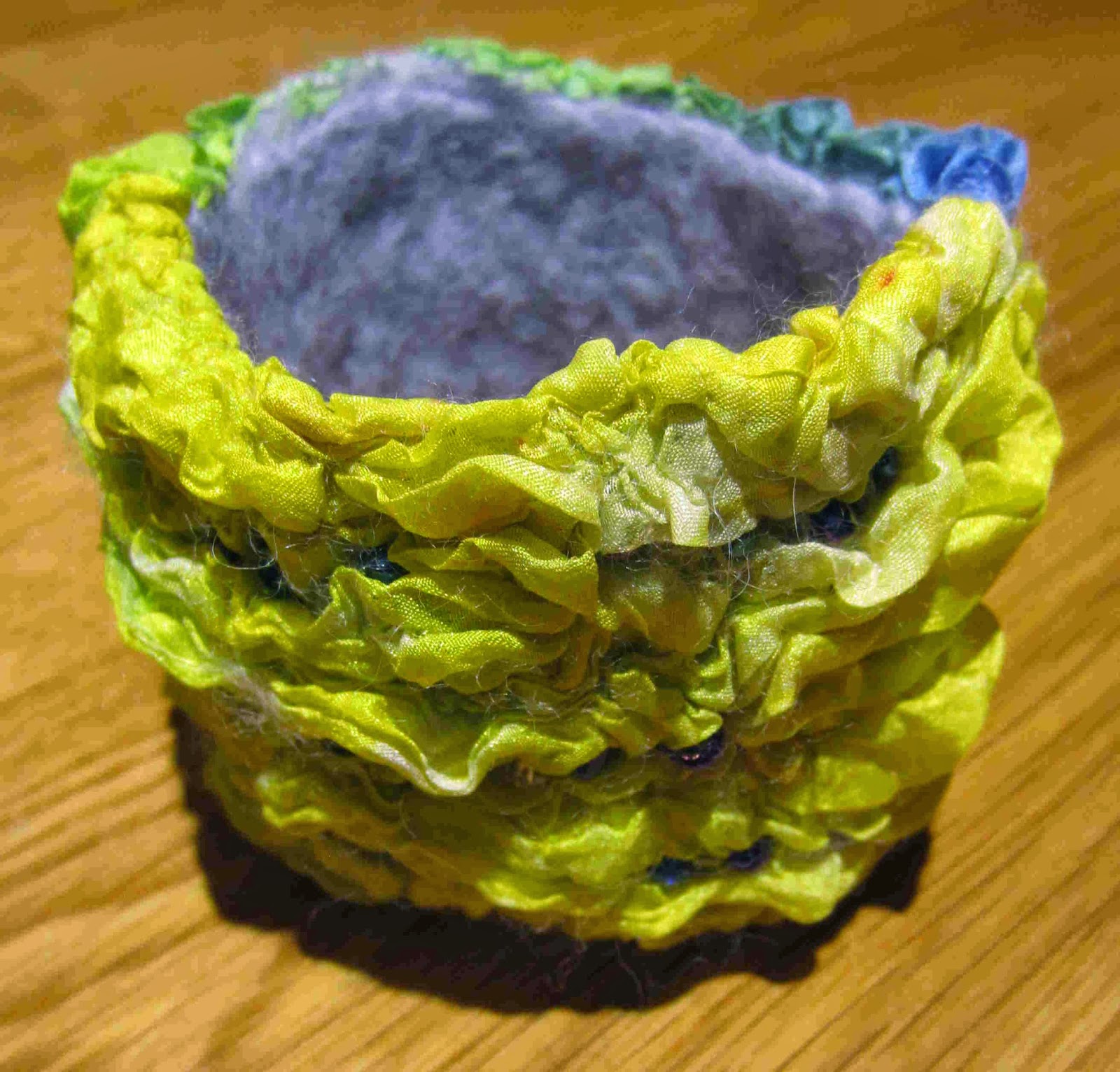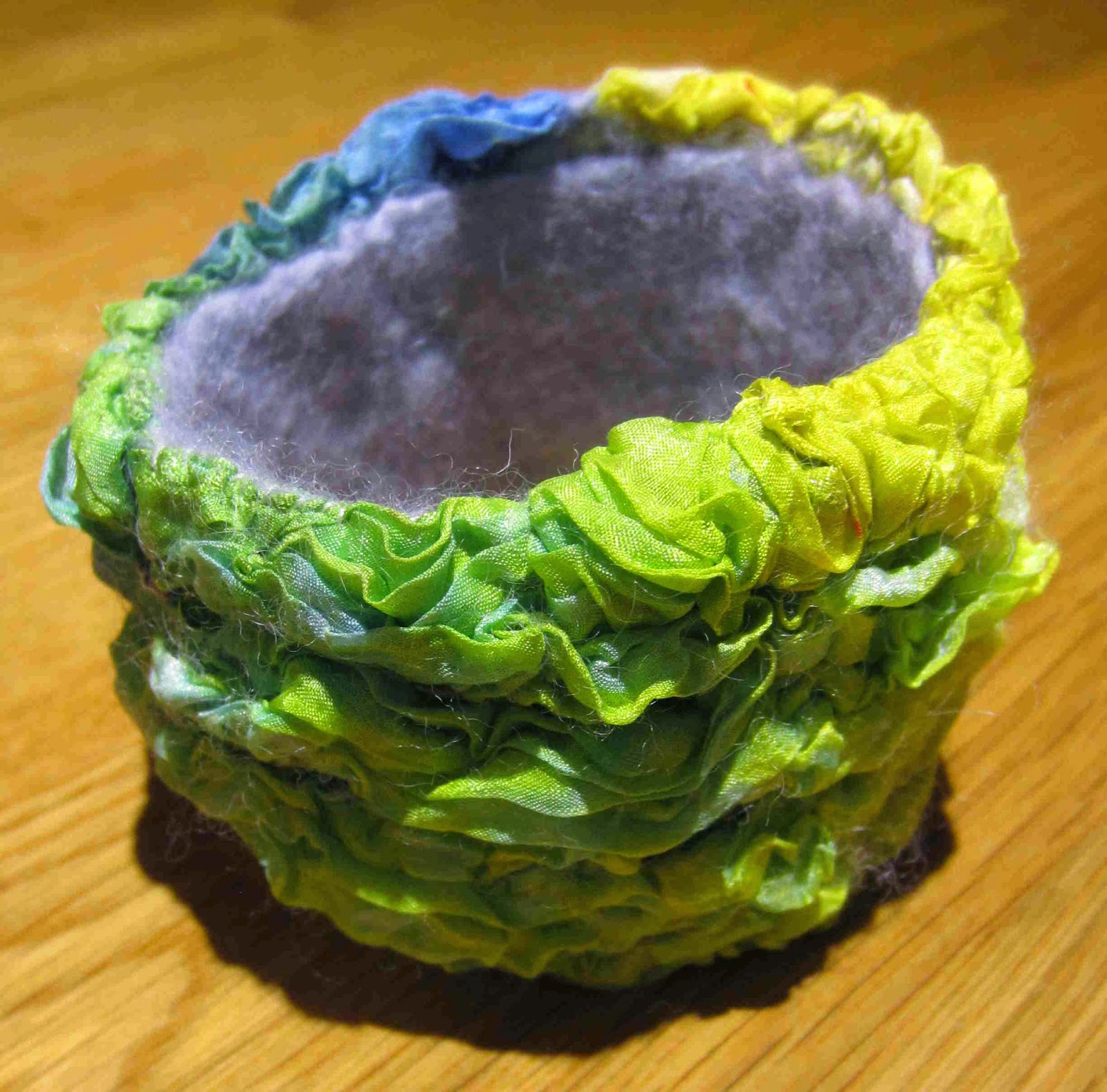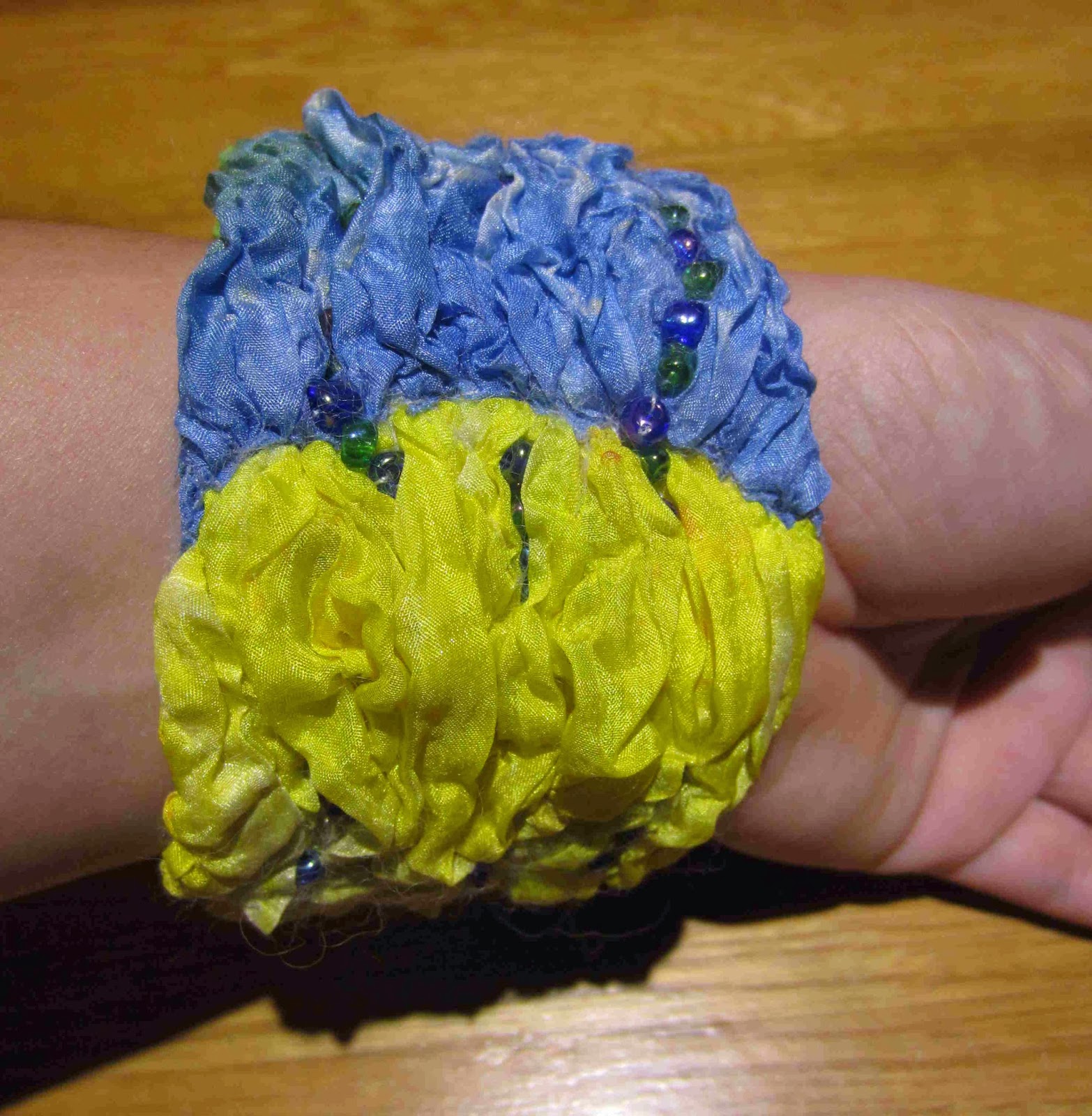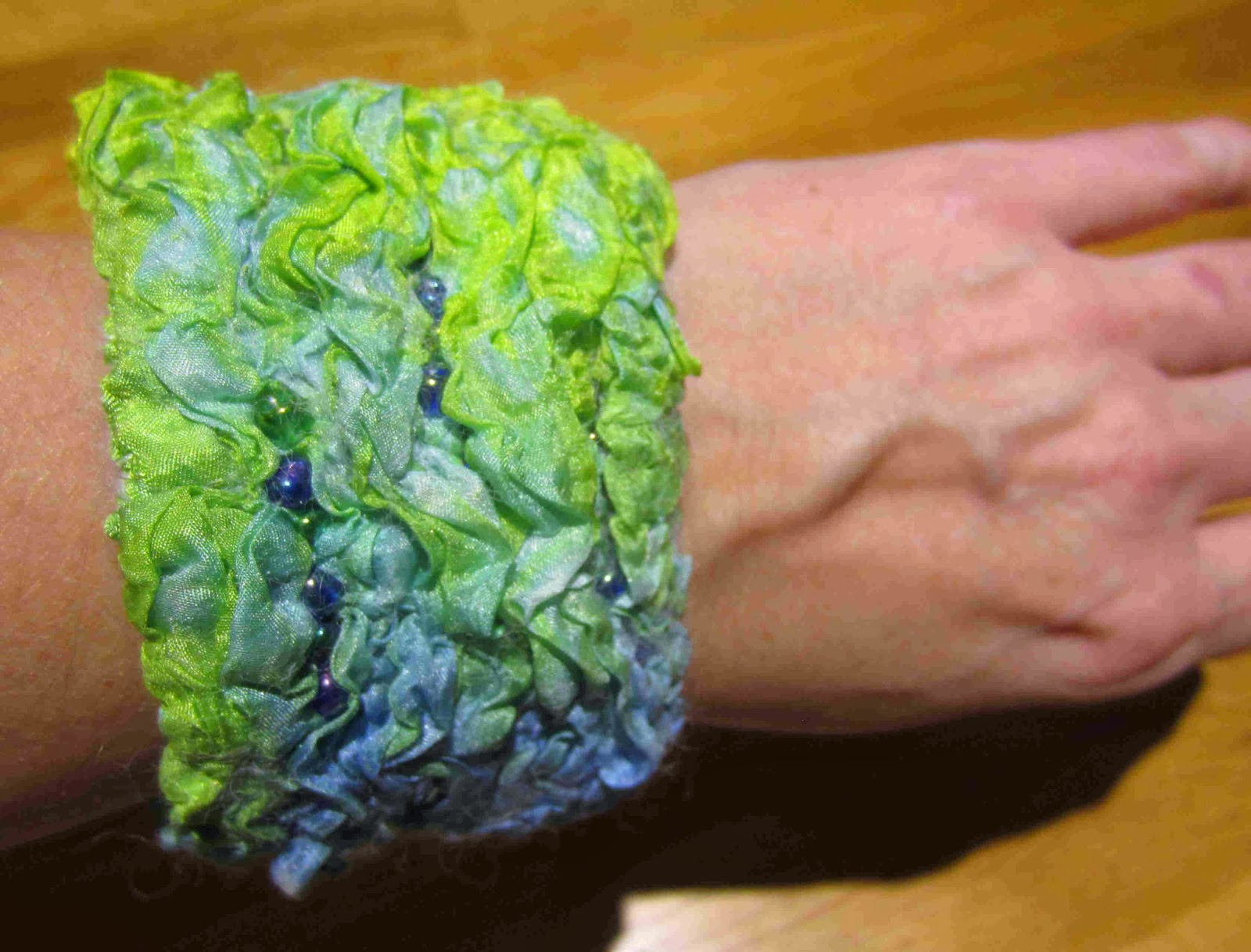Following some very helpful suggestions from the ladies at the Felting and Fibre Studio Forum I have felted the original piece of shibori dyed silk and created a couple more samples, trying out alternative methods in an effort to maintain the beautiful folds of the bound fabric.
Felting the original shibori piece
I laid a very fine layer of merino all over the silk and lightly sprayed it with soapy water. Then folded the fabric concertina style from one end, trapping the wool between the layers of fabric.
Once folded up, it was secured with elastic bands every 4 or 5 cm and felted with warm soapy water.
This was the result once the bands had been removed and the piece stretched at little. It is a similar width to the original silk but the length is much shorter, it was 50 cm long and is now just 8 cm. I think it will make a nice cuff / bracelet with some beads nestling in the folds.
Creating a laminate for shibori
For this sample I felted a piece of silk to 2 fine layers of merino and fulled to achieve rippling of the silk. Then it was stitched and the threads pulled ready for shibori dyeing.
It was dyed with Procion MX midnight blue – as you can see the silk has accepted the dye much better than the wool.
It was allowed to dry before removing the stitches and stretching out. It has a springy nature; it can be pulled almost flat but always springs back to this position.
Adding wool fibre while drawing the threads tight
On a third sample, I stitched the silk as normal but while I was drawing the threads tight I poked wisps of merino into the folds and felted the piece before dyeing with the piece above. This is what it looked like after it had dried and the stitches were removed. It looks remarkably similar to the first piece with very sharp folds in the silk.















